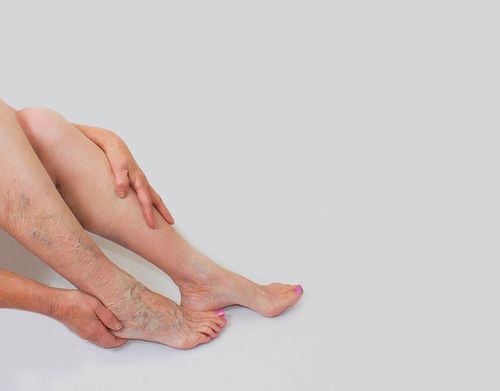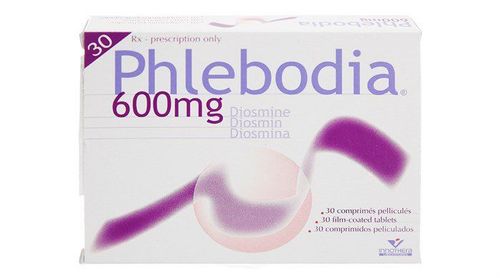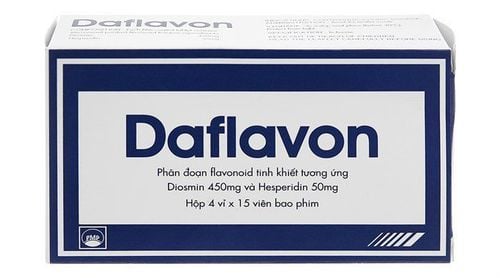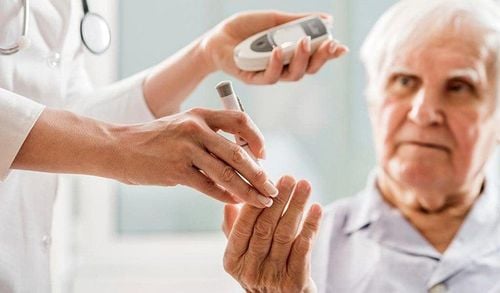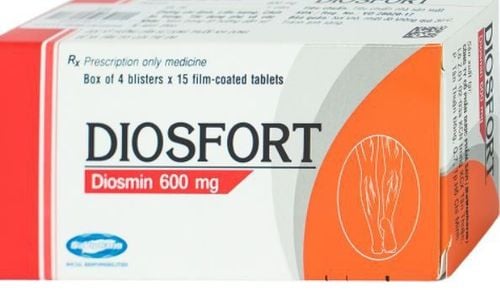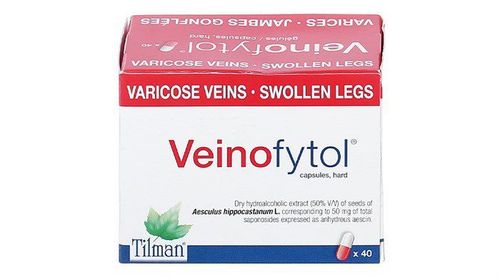This is an automatically translated article.
Because the disease progresses silently, recognizing the signs of varicose veins is extremely important for patients to come to the hospital for examination and timely treatment.
1. What is varicose veins?
Varicose veins is a common disease with the incidence of women being 3 times higher than that of men. Varicose veins of the lower extremities is a condition in which blood in the venous system becomes stagnant in the legs and cannot return to the heart through the vena cava as usual. This condition increases the hydrostatic pressure in the veins causing it to dilate. Without proper treatment in time, the disease will continue to progress and the arterial blood flow to the legs will decrease.
Varicose veins of the lower extremities often occur silently. If left untreated, it can cause bleeding, non-healing leg ulcers and even gangrene.
Anyone can get varicose veins. However, the following groups of people are at high risk for the disease:
Family history of varicose veins; Gender: There are more women than men; Age: The older you are, the higher your risk of developing varicose veins; Fat ; Pregnancy: Twins or multiple births due to hormonal changes; Jobs that have to stand a lot, move less like salespeople, office workers, teachers, doctors...

Các dấu hiệu suy giãn tĩnh mạch có thể dễ bắt gặp ở một số người đang mang thai
2. Recognize the signs of varicose veins
Because the disease progresses silently, it is very important to recognize the signs of varicose veins. In the early stages, the disease usually has no symptoms, sometimes just mild and more severe discomfort in the legs. Varicose veins may be itchy or hot. Symptoms often worsen at the end of the day, especially when the patient has to stand for long periods of time.
In more severe cases, the patient may find that the legs get tired easily when standing for a long time, slight swelling if sitting for a long time, feeling like needles or ants crawling on the calves, night cramps ... The telltale signs of varicose veins at this point are more obvious. The patient may see small blood vessels like veins appearing on the surface of the skin like a spider's web. The above symptoms may disappear when the patient rests because the veins are not dilated much. That's why often patients pay little attention, easy to ignore.
In general, people who notice the following signs of varicose veins should go to the hospital to get checked:
Feeling tight in the calf, heaviness and fatigue in the legs; Calf cramps at night, feeling like ants crawling; Swollen, itchy feet, especially in the ankle area; Inflamed, blue tendons along the skin of your thighs, ankles, or knees; skin discoloration, ulcers or even soft tissue infections near the ankles; With the development of medical science, the diagnosis and identification of varicose veins is no longer too difficult. The doctor will use clinical examination and Doppler ultrasound of blood vessels to diagnose this disease.
3. How is varicose veins treated?
When recognizing the signs of varicose veins, the patient should quickly go to the hospital for examination and treatment. Currently, varicose veins have the following treatment methods:
Sclerotherapy: The doctor will inject drugs that cause fibrosis into the damaged blood vessels. The patient will be injected with many therapeutic injections until the varicose veins are no longer present. This is an effective way to treat superficial veins under the skin. Laser varicose veins: Using the principle of heat of the laser to flatten the veins, the doctor inserts the laser fibers into the varicose veins. After turning on the power, the laser is directed at the position to be intervened and pulled out slowly so that the two vein walls stick together. At the same time, the procedure of anesthesia combined with a syringe around the vein will help reduce the impact of the laser on the surrounding tissue, limit tissue burns, and avoid sensory nerve complications. Using medical stockings: This is a very popular and effective non-drug method. These socks put pressure on all parts of the legs, which is consistent with normal physiology: tighter ankles, looser when walking up, always hugging legs, pushing blood through veins to the heart, at the same time accelerate blood circulation, minimize the risk of blood clots due to slow blood flow. Closing the venous valve and creating the right pressure are two of the most important properties of medical stockings that no other medicine can replace. Varicose veins is a disease that progresses silently, so as soon as you see suspicious signs, the patient needs to go to the hospital for examination and medical treatment.

Sau khi phát hiện dấu hiệu suy giãn tĩnh mạch thì người bệnh cần được điều trị sớm
In order to help customers screen effectively for this disease, Vinmec International General Hospital has a Lower Extremity Varicose Vein Examination Package, which helps determine the cause, complications and level of venous insufficiency.
When choosing to use the lower extremity venous insufficiency package, customers will receive:
Cardiology Specialist Examination (with appointment); Peripheral blood cell analysis (by laser counter); Glucose quantification; Quantification of Creatinine; Quantification of Pro Calcitonin; Measure AST activity (GOT); Measure ALT (GPT) activity; Quantification of LDL - C (Low density lipoprotein Cholesterol); Quantification of Triglycerides; Quantification of Cholesterol; Electrolyte (Na, K, Cl); Normal electrocardiogram; Echocardiography, transthoracic pericardium; Straight chest x-ray; Doppler ultrasound of the arteries and veins of the lower extremities (veins of the lower extremities).
Please dial HOTLINE for more information or register for an appointment HERE. Download MyVinmec app to make appointments faster and to manage your bookings easily.




